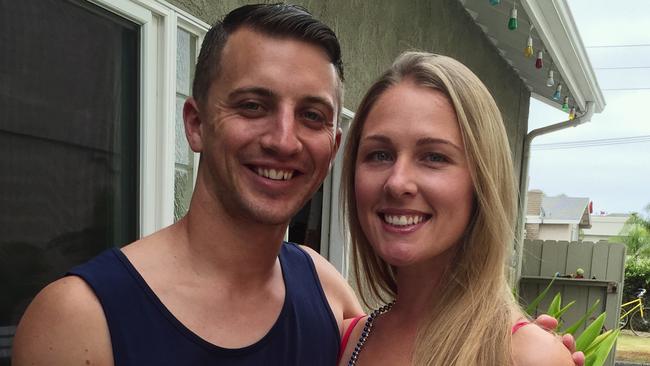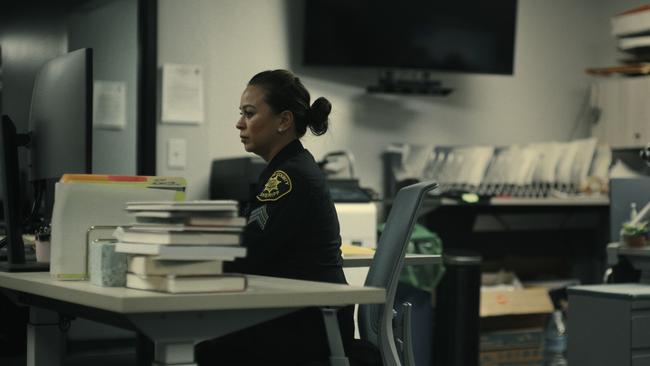Netflix’s American Nightmare is an intriguing tale of criminal deception
This is a series that examines the notion of procedural justice and the problems of police bias and, like the best true crime, American Nightmare is conspicuously well made, crisply edited and beautifully photographed.

While it is too easy to disdain true crime shows merely as crudely sensational, it’s still an ethically controversial genre. It’s also hard to doubt their ability to mould common responses to extreme violations of social norms. Many of them are in fact consciously in the public interest, reflective and critical.
The best ones, those of so called “prestige true crime”, engage and implicate us in disturbing and unsettling ways, with narratives that restore a sense of righteousness.
There’s obviously a genuine desire to better understand why people act – and react – as they do in extreme circumstances, and why they contribute to, or even create, the terrible situations in which they find themselves.
Netflix’s American Nightmare is certainly about a couple who find themselves in such a predicament, the tragic case of Denise Huskins and her boyfriend Aaron Quinn. It’s a series that examines the notion of procedural justice and the problems of police bias and, like the best true crime, American Nightmare is conspicuously well-made, crisply edited and beautifully photographed.
It asks one big question in particular: what happens when police quickly decide who is guilty and don’t bother looking for the “real” perpetrator, what’s known to defence lawyers as “the rush to judgment” syndrome, an obsession to win at any cost.
In 2015 Huskins was taken from Quinn’s home in Vallejo, California – a quiet suburb where people feel safe – by a violent home intruder, and drugged, raped and held hostage in a remote location. Quinn quickly became the prime suspect, interrogated, and persecuted by the police.
Then when Huskins, seemingly unharmed, escaped from her attacker two days later, police publicly alleged that she and Quinn fabricated the entire incident as a hoax and condemned them for allegedly wasting public resources and time on the investigation. As their lawyer would later say, “For the rest of their lives these two individuals have essentially a tattoo on their forehead, which labels them as hoaxers”.
The case became known as the “Gone Girl” kidnapping, referencing the popular book and 2014 movie about a phony kidnapping. It quickly becomes a media circus.
You might recall Gillian Flynn’s best-selling novel and the David Fincher movie version, which the Guardian called a “merry dance of death through the murderous maze of modern marriage”. It’s the story of a wife who goes missing on the day of the couple’s fifth wedding anniversary, their front door left open, a coffee table shattered.
Suspicion swings the way of the husband when he lies to the police and as the case of his missing wife grows to a national media story, he becomes the prime suspect. The twist was of course that the wife had in fact faked her own abduction.
Fincher’s movie adaptation was released just a year prior to the kidnapping, and headlines quickly seized on the general similarity between Rosamund Pike’s Amy’s elaborate plan to fake her own abduction in his film, and the distressing details of Huskins’ ordeal.
The three-part series is from filmmakers Felicity Morris and Bernadette Higgins, who also made the brilliant The Tinder Swindler for Netflix. That was the story of the Israeli conman who used the dating application to emotionally manipulate unsuspecting woman into financially supporting his lavish lifestyle. The new series is also from the factual production company Raw, which is coming to dominate Netflix’s cache of successful true crime stories which have found such a massive, infatuated audience.
“A lot of crime stories are very linear and obvious from the start. What was really intriguing about this story was the fact that every time you think you know what’s happened, there’s another twist”, Higgins says. “Everyone thinks they know the ending from the start. In this story, few people would’ve ever predicted that the truth was indeed the truth.”
It’s cleverly set up in the first episode entitled “The Boyfriend”, Moore and Higgins laying out a series of mysteries that quickly test both our sense of identification and empathy.
It begins on the March 23, 2015, at 1:53pm and the rather impassive voice of Aaron Quinn calls 911 to report that his girlfriend Denise Huskins has been kidnapped by a masked intruder the night before. He seems oddly disconnected, vocally frail and emotionless. The events, too, he describes, have happened hours ago, a delay that proves crucial to what unfolds.
As crime journalist Henry Lee, who covered the case for the San Franscisco Chronicle later says of his newsroom’s reaction: “We’re looking at each other, asking ‘What’s this all about; why the delay?’ We’re looking at suspicion falling on the boyfriend – it’s always the boyfriend.”

Police turn up and search the house and speak to Aaron, who is now distraught by the whole thing. He is taken to the police station and interviewed by a disbelieving Detective Mat Mustard, and at this point Huskins has been missing for 10 hours. The cop self-importantly calls himself “a puzzle solver”, who has “put a lot of puzzles together”.
Aaron tells the policeman a seemingly outrageous story, how he was awakened from sleep by intruders with laser lights, who restrained him with zip ties, put swim goggles over his eyes, placed headphones over his ears, drugged him with NyQuil and Diazepam, and then disappeared with his girlfriend.
Confusing the mystery further, Aaron is told the attack was meant for his former girlfriend Andrea, a crucial part of the story; she’s someone he still hankers for, and that the intruders – he thinks there were more than one – wore wetsuits. It all seems absurd.
Moore and Higgins cleverly intercut footage from both police body-worn cameras, and the actual interrogation of Aaron by the pugnacious Mustard, with a more recent interview straight to camera for the producers. The tenses move back and forth viscerally as the possible events are laid out for us as they were at the time for the police.
Ominous use is made of footage of a door with Interview Room 3 printed on it, behind which Aaron’s interrogation takes place. There’s something forbidding about it, Kafkaesque. It’s unclear if Aaron has ever been read his legal rights – it’s obvious initially he trusts the police and the legal system – but he appears to be dressed in a prisoner’s trousers. He becomes increasingly distressed. Eventually, he has a lawyer, a hard nut called Dan Russo, who could have magically appeared from a Michael Connelly novel. “He’s been eaten alive,” he comments. “He’s like chum for a shark.”
But then, with Aaron still in custody, Huskins reappears just over 48 hours later, 400 miles away in Huntington Beach, in California, near her father’s house. She seems unharmed, strangely calm, though she later reveals that she had been raped twice by her kidnapper.
In the second episode, Gone Girl, Huskins recounts her ordeal to camera, again intercut with aspects of her interrogation; the third, The Others, details more attempted kidnappings that lead law enforcement to a totally unexpected suspect.
The series initially works by creating a sense of dread – we are simply not sure if we can trust the two central characters who really appear as unreliable narrators. We don’t know if we are being misled, either deliberately or unintentionally. It’s a clever device in what is really a sophisticated piece of storytelling.
“We didn’t want the audience to be ahead of where the public were at the time,” Higgins says. “As the story unfurled, people were being drip-fed information and forming slapdash conclusions. We really wanted to play with that in the series, a confronting of classic true crime tropes.” With Aaron, she says, as writers they wanted the audience to feel in the same position as the police and make themselves question: do we believe this guy? Is he really credible and are the police right in assuming guilt from the outset?
But with the second act, the interview with Denise Huskins, they wanted to highlight her courage in so directly telling her story.
“So we wanted to make sure that she was given that platform, so that the audience could have a moment to think: I believe her, why didn’t they believe her? Or what are my expectations of what a victim looks like and how she ‘should’ present?”
What is so refreshing about American Nightmare is the way that the series is focused so resolutely on the victims, not only at the hands of the kidnappers but also the police and their misogynistic tactics. As Higgins says: “We were of the mindset that these true crime stories should be about the victims, and their experiences, as opposed to fetishising the perpetrator and making them notorious household names.”
American Nightmare streaming on Netflix




To join the conversation, please log in. Don't have an account? Register
Join the conversation, you are commenting as Logout